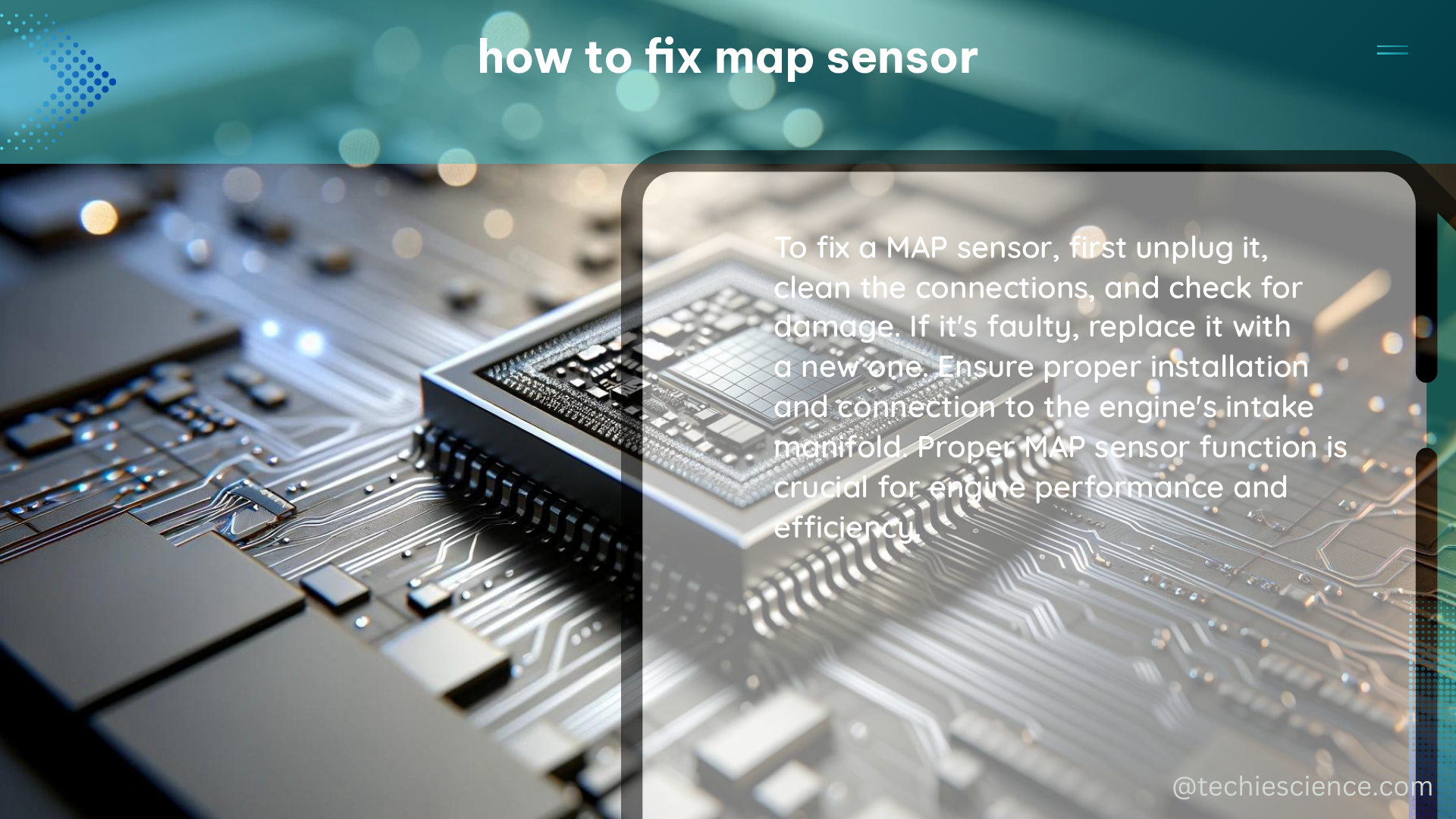The Manifold Absolute Pressure (MAP) sensor is a critical component in modern engine management systems, responsible for providing the Engine Control Module (ECM) with vital information about the engine’s operating conditions. When this sensor fails or experiences issues, it can lead to a range of performance problems, including poor fuel economy, misfiring, stalling, and even a no-start condition. In this comprehensive guide, we’ll delve into the intricacies of diagnosing and fixing a MAP sensor, equipping you with the knowledge and tools necessary to tackle this common automotive repair.
Understanding the MAP Sensor’s Function
The MAP sensor measures the vacuum or pressure within the engine’s intake manifold, which directly correlates to the engine’s load. This information is then used by the ECM to adjust the fuel injection and ignition timing, ensuring optimal engine performance and efficiency. When the MAP sensor is not functioning correctly, the ECM may receive inaccurate data, leading to a range of drivability issues.
Symptoms of a Failing MAP Sensor

Recognizing the symptoms of a failing MAP sensor is the first step in the troubleshooting process. Some common signs of a problematic MAP sensor include:
-
No-start or Difficult Starting: A faulty MAP sensor can prevent the engine from starting or make it difficult to start, as the ECM is unable to properly determine the engine’s load and adjust the fuel delivery accordingly.
-
Rough Idle: Inconsistent MAP sensor readings can cause the engine to idle roughly, with noticeable fluctuations in RPM.
-
Misfiring: Inaccurate MAP sensor data can lead to improper fuel and ignition timing, resulting in engine misfires.
-
Stalling or Surging: Erratic MAP sensor readings can cause the engine to stall or surge unexpectedly, as the ECM struggles to maintain the proper air-fuel ratio.
-
Poor Fuel Economy: A malfunctioning MAP sensor can cause the ECM to deliver too much or too little fuel, leading to a decrease in fuel efficiency.
-
Lack of Power: Incorrect MAP sensor data can prevent the ECM from properly adjusting the engine’s performance, resulting in a noticeable loss of power.
-
Check Engine Light: Most modern vehicles will illuminate the check engine light when the ECM detects an issue with the MAP sensor, often accompanied by diagnostic trouble codes such as P0105, P0106, P0107, P0108, or P0109.
Diagnosing a MAP Sensor Issue
To accurately diagnose a MAP sensor problem, follow these steps:
-
Visual Inspection: Carefully inspect the MAP sensor and its wiring harness for any signs of damage, such as cracks, loose connections, or corrosion.
-
Sensor Cleanliness: Ensure that the MAP sensor is clean and free of any debris or contaminants that could affect its performance.
-
Wiring Harness Integrity: Check the wiring harness for any breaks, shorts, or loose connections that could interfere with the sensor’s signal.
-
Scan Tool Diagnostics: Use a professional-grade scan tool to retrieve any diagnostic trouble codes related to the MAP sensor and to monitor the sensor’s live data.
-
Multimeter Testing: Utilize a digital multimeter to test the MAP sensor’s voltage output and resistance, comparing the readings to the manufacturer’s specifications.
-
Sensor Replacement: If the MAP sensor is found to be faulty, replace it with a new, OEM-approved component.
Correcting MAP Sensor Variation
While small variations in MAP sensor readings are considered normal, inconsistent or erratic readings can lead to performance issues. One solution to address this problem is the use of a barometric correction feature, available in some high-resolution engine management systems, such as the MSPNP.
The barometric correction feature allows for a percentage-based adjustment to the MAP sensor readings, helping to balance out any variations and ensure consistent engine performance. However, it’s important to note that this feature may not be necessary for all applications, and small variations in MAP sensor readings are generally acceptable as long as the readings remain consistent.
Conclusion
Diagnosing and fixing a Manifold Absolute Pressure (MAP) sensor requires a thorough understanding of its function, symptoms of failure, and proper troubleshooting techniques. By following the steps outlined in this comprehensive guide, you’ll be well-equipped to identify and resolve any issues with your vehicle’s MAP sensor, restoring optimal engine performance and fuel efficiency.
Reference:
- MSPNP MAP Sensor Calibration
- Symptoms of a Bad MAP Sensor and How to Fix It
- Intro to MAP Sensor Data
- MAP Sensor Calibration – HP Tuners Bulletin Board
- Error Calibrating MAP Sensor – HP Academy

The lambdageeks.com Core SME Team is a group of experienced subject matter experts from diverse scientific and technical fields including Physics, Chemistry, Technology,Electronics & Electrical Engineering, Automotive, Mechanical Engineering. Our team collaborates to create high-quality, well-researched articles on a wide range of science and technology topics for the lambdageeks.com website.
All Our Senior SME are having more than 7 Years of experience in the respective fields . They are either Working Industry Professionals or assocaited With different Universities. Refer Our Authors Page to get to know About our Core SMEs.